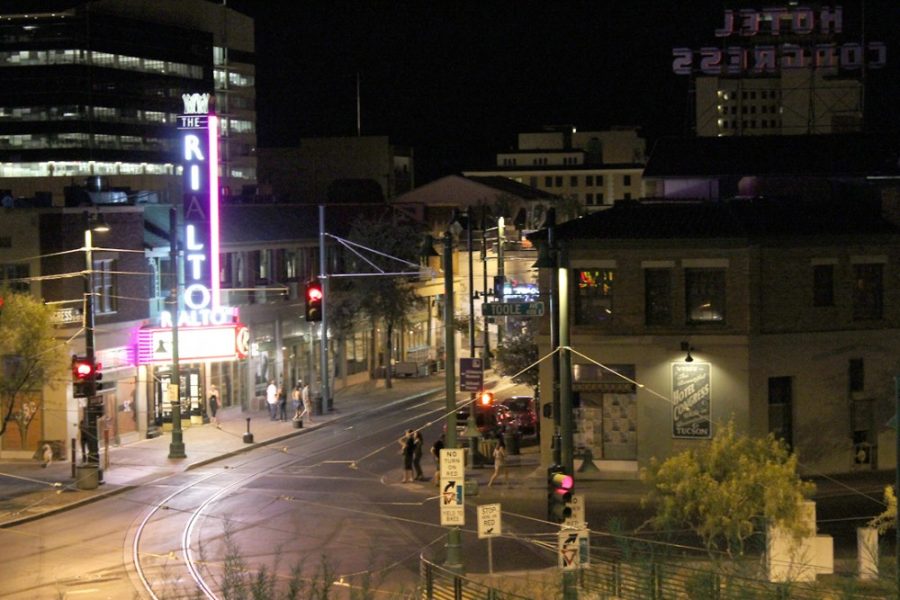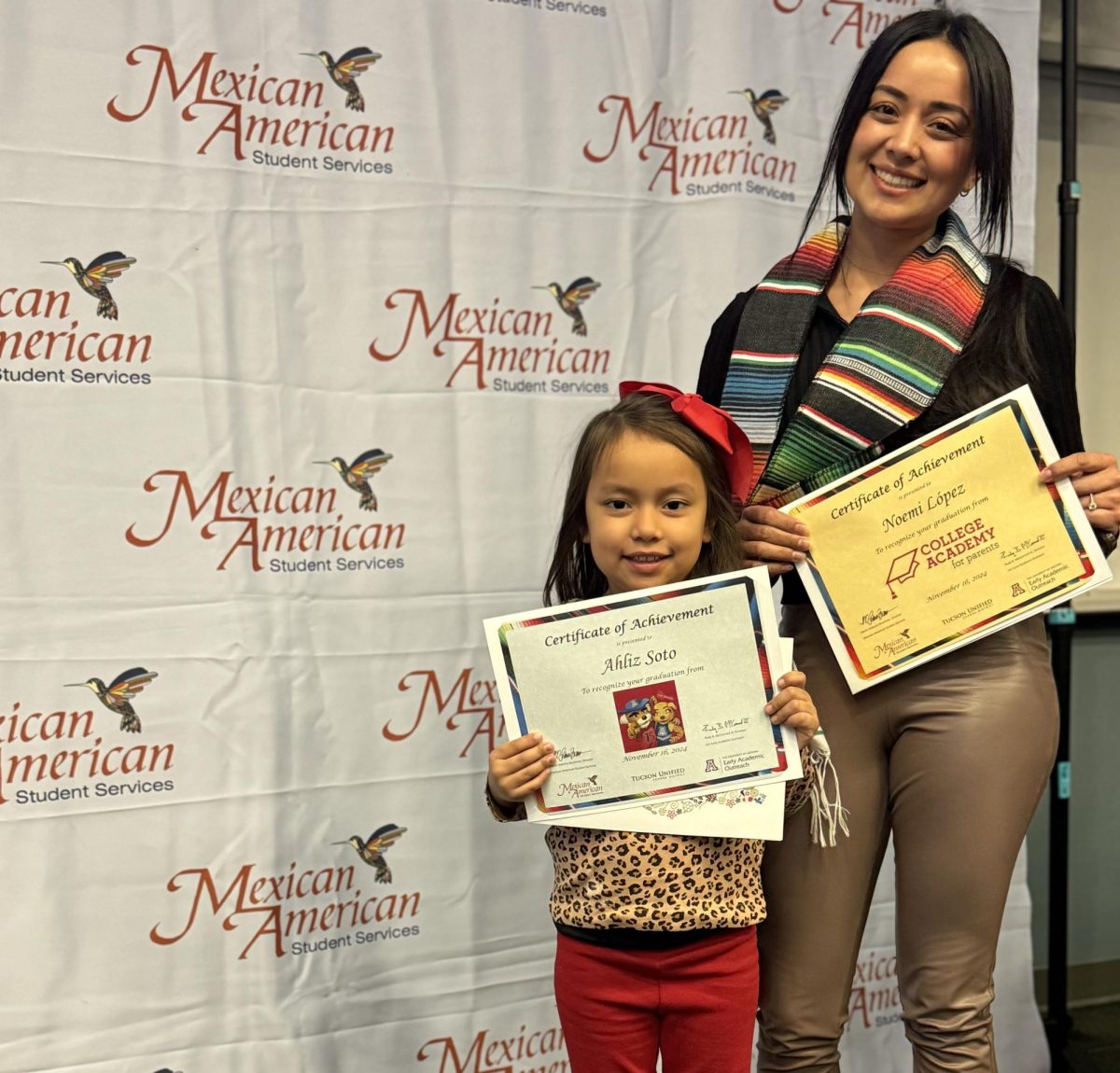When Ezekiel Canett was growing up, his grandmother would tell him of her romance with downtown Tucson when she was younger. She loved the vibrant culture and spoke of how she used to go dancing there.
She swore it was the parking meters that ultimately drove business from downtown.
Whatever the reason behind the decline of downtown Tucson decades ago, people are coming back now, and Canett, who has worked at various stores and restaurants in the downtown area for the past eight years, has watched its revitalization firsthand.
“People had a long list of complaints about how [downtown] had been going downhill,” Canett said. “There weren’t any real projects going on to bring life back into it.”
In recent years however, downtown Tucson has seen several new businesses — bars, restaurants and now a streetcar — coming to the area and adding new energy. The UA and its students have played a significant role, said Steve Kozachik, city councilman for Ward 6, which includes downtown Tucson.
The UA has established an official presence in the area. UA Downtown, which houses programs for the College of Architecture, Planning and Landscape Architecture and the College of Social and Behavioral Sciences, was opened in 2011 on the corner of Stone Avenue and Pennington Street and has plans to continue adding UA programs inside the building.
Also, in the last year, The Cadence, a student housing complex at the corner of Fourth Avenue and Congress Street, has drawn hundreds of UA students downtown.
The UA put out a request for proposal for student housing being built downtown, which offered the distinction of being a UA affiliated property, said Dana Robbins-Murray, assistant director of marketing for Residence Life.
“At the time the university was in need of additional student housing,” Robbins-Murray said. “Because of the revitalization downtown and some of the university colleges being down there, they thought it would be a good support of the downtown revitalization.”
The RfP gives The Cadence, which opened in August 2013, the status of being a UA affiliated property, Robbins-Murray said, and it is the only off-campus housing property that maintains that distinction.
The location for The Cadence was chosen because of revitalization efforts downtown, said Johanna Adolfs, property manager for The Cadence.
“[Developers] thought it would be a unique opportunity to integrate students into downtown life,” Adolfs said. “Up until around this year, downtown was really not student-friendly.”
Now, The Cadence is part of what’s helping revitalize downtown, as its property was built with additional space for retail, Adolfs said. That retail space is now being filled by Hi Fi Kitchen & Cocktails, World of Beer, Gio Taco and others.
Recently, several other bars have opened downtown with a focus on UA students and the younger demographic that is starting to go downtown more, Canett said, including Playground Bar and Lounge, Hub Restaurant and Ice Creamery and Saint House Island Bistro & Rum Bar.
The Tucson Sun Link Modern Streetcar will also begin operation later this month. It can take riders from the UA campus directly to Congress Street and downtown.
A Marriott hotel is proposed to be built on the corner of Fifth Avenue and Broadway Boulevard, behind Playground Bar & Lounge. The Screening Room on Congress Street will also begin showing first-run movies, which downtown has not seen for 40 years. Diablo Burger and other restaurants have also opened recently in the area.
Some of these new businesses are also not just targeted at UA students, Kozachik said. UA students are just a part of a new demographic that is going into the downtown area.
“Downtown is such a small area anyways, you can jog from one end of it to the other in five or ten minutes,” he said. “It’s a cohesive enough area down there that all the retail going in is focused on the whole diverse, new demographic that we’re seeing.”
However, not everyone is satisfied with the way downtown Tucson’s revitalization is happening.
The boisterous atmosphere from the bars on Congress Street and Fourth Avenue led to noise complaints from residents and businesses, Kozachik said. He said he sat down with the businesses and they considered proposing a new noise ordinance, but in the end they decided to work together and be more considerate with regards to noise levels.
“You can’t be making people’s windows rattle and expect them to be your customers,” he said. “You have to be a good neighbor, too, as a business owner.”
Gentrification, the process of the middle class moving into urban areas and displacing lower-class residents, is another concern being raised as more upscale development continues in the downtown area, but Kozachik doesn’t consider it to be a problem for the city.
He said the situation is unlike other cities where poorer residents were run out of the area to make way for revitalization efforts. In the cases of The Cadence and One East Broadway, another downtown housing project, the development occurred on what were previously parking lots. The proposed hotel, too, is set to be built upon a parking lot.
Canett, the longtime Tucson resident, also doesn’t think gentrification will pose significant issues, but rather is merely a byproduct of a city undergoing a facelift.
However, Canett said he does have concerns about the direction Tucson’s revitalization is going, with regards to the addition of the streetcar. The areas of University Boulevard, Fourth Avenue and downtown have maintained separate identities, he said, and the streetcar will intertwine the areas more so than before.
“It’s good as long as Tucsonans and our visitors are aware of what downtown will become,” he said, “but I’m a little bit of a hippie.”









